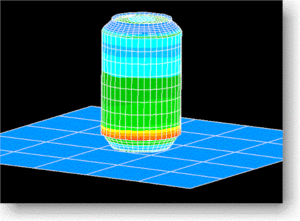Difference between revisions of "Impact Simulation Software"
Jump to navigation
Jump to search
(Created page with "Category:Software{{Knoppen}} <noinclude><!------------------------------------------------ * READ THIS FIRST * Only edit this page if you can improve the content. * Improper...") |
|||
| Line 1: | Line 1: | ||
[[Category:Software]]{{Knoppen}} | [[Category:Software]]{{Knoppen}} | ||
[[File:Impact Simulation Software.gif|thumb|right|Impact Simulation Software]] | |||
'''Impact Simulation Software''' used on the desktop, in the cloud, and on mobile devices that are easy to integrate into each phase of the design and engineering process. From mechanical stress, vibration, motion, energy, and structural analysis to computational fluid dynamics, plastic injection molding, and multiphysics. | |||
* | |||
* | |||
* | |||
==Benefits== | |||
* Predict performance:Gain valuable insight and reduce the risk of failure by accurately predicting how your designs will respond to ordinary and extreme use. | |||
* Optimize designs:Reduce costs and get innovative designs to market faster without compromising safety or performance.Prevent over-engineering and control material usage. | |||
* Validate design decisions:Create quality products, improve building and infrastructure designs, meet safety requirements, and avoid costly mistakes by validating critical design decisions and material choices before manufacturing or construction begins. | |||
Latest revision as of 08:41, 9 February 2013
Impact Simulation Software used on the desktop, in the cloud, and on mobile devices that are easy to integrate into each phase of the design and engineering process. From mechanical stress, vibration, motion, energy, and structural analysis to computational fluid dynamics, plastic injection molding, and multiphysics.
Benefits
- Predict performance:Gain valuable insight and reduce the risk of failure by accurately predicting how your designs will respond to ordinary and extreme use.
- Optimize designs:Reduce costs and get innovative designs to market faster without compromising safety or performance.Prevent over-engineering and control material usage.
- Validate design decisions:Create quality products, improve building and infrastructure designs, meet safety requirements, and avoid costly mistakes by validating critical design decisions and material choices before manufacturing or construction begins.
